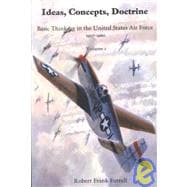| Disclaimer | ii | ||||
| Foreword | xi | ||||
| About the Author | xv | ||||
| Acknowledgments | xvii | ||||
|
1 | (14) | |||
|
12 | (3) | |||
|
15 | (46) | |||
|
16 | (3) | |||
|
17 | (2) | |||
|
19 | (1) | |||
|
19 | (8) | |||
|
24 | (2) | |||
|
26 | (1) | |||
|
27 | (24) | |||
|
31 | (3) | |||
|
34 | (5) | |||
|
39 | (5) | |||
|
44 | (7) | |||
|
51 | (2) | |||
|
53 | (8) | |||
|
61 | (66) | |||
|
62 | (4) | |||
|
66 | (9) | |||
|
68 | (2) | |||
|
70 | (3) | |||
|
73 | (2) | |||
|
75 | (15) | |||
|
78 | (5) | |||
|
83 | (1) | |||
|
84 | (4) | |||
|
88 | (1) | |||
|
89 | (1) | |||
|
90 | (11) | |||
|
92 | (4) | |||
|
96 | (5) | |||
|
101 | (13) | |||
|
102 | (3) | |||
|
105 | (3) | |||
|
108 | (6) | |||
|
114 | (13) | |||
|
127 | (64) | |||
|
127 | (20) | |||
|
132 | (3) | |||
|
135 | (3) | |||
|
138 | (4) | |||
|
142 | (4) | |||
|
146 | (1) | |||
|
147 | (20) | |||
|
149 | (2) | |||
|
151 | (4) | |||
|
155 | (1) | |||
|
156 | (2) | |||
|
158 | (4) | |||
|
162 | (3) | |||
|
165 | (2) | |||
|
167 | (13) | |||
|
171 | (2) | |||
|
173 | (5) | |||
|
178 | (2) | |||
|
180 | (1) | |||
|
180 | (11) | |||
|
191 | (82) | |||
|
191 | (10) | |||
|
196 | (4) | |||
|
200 | (1) | |||
|
201 | (13) | |||
|
203 | (2) | |||
|
205 | (1) | |||
|
206 | (2) | |||
|
208 | (4) | |||
|
212 | (2) | |||
|
214 | (23) | |||
|
216 | (3) | |||
|
219 | (2) | |||
|
221 | (3) | |||
|
224 | (7) | |||
|
231 | (6) | |||
|
237 | (22) | |||
|
240 | (5) | |||
|
245 | (6) | |||
|
251 | (8) | |||
|
259 | (14) | |||
|
273 | (92) | |||
|
273 | (9) | |||
|
275 | (3) | |||
|
278 | (4) | |||
|
282 | (9) | |||
|
282 | (3) | |||
|
285 | (3) | |||
|
288 | (3) | |||
|
291 | (13) | |||
|
294 | (2) | |||
|
296 | (2) | |||
|
298 | (4) | |||
|
302 | (2) | |||
|
304 | (31) | |||
|
305 | (1) | |||
|
306 | (8) | |||
|
314 | (2) | |||
|
316 | (4) | |||
|
320 | (3) | |||
|
323 | (4) | |||
|
327 | (7) | |||
|
334 | (1) | |||
|
335 | (17) | |||
|
336 | (4) | |||
|
340 | (5) | |||
|
345 | (7) | |||
|
352 | (13) | |||
|
365 | (54) | |||
|
365 | (8) | |||
|
373 | (6) | |||
|
379 | (22) | |||
|
384 | (12) | |||
|
396 | (5) | |||
|
401 | (7) | |||
|
406 | (2) | |||
|
408 | (11) | |||
|
419 | (58) | |||
|
419 | (14) | |||
|
423 | (1) | |||
|
424 | (4) | |||
|
428 | (4) | |||
|
432 | (1) | |||
|
433 | (10) | |||
|
437 | (6) | |||
|
443 | (24) | |||
|
445 | (2) | |||
|
447 | (5) | |||
|
452 | (6) | |||
|
458 | (3) | |||
|
461 | (4) | |||
|
465 | (2) | |||
|
467 | (10) | |||
|
477 | (96) | |||
|
477 | (27) | |||
|
477 | (8) | |||
|
485 | (8) | |||
|
493 | (3) | |||
|
496 | (4) | |||
|
500 | (4) | |||
|
504 | (37) | |||
|
506 | (14) | |||
|
520 | (3) | |||
|
523 | (5) | |||
|
528 | (13) | |||
|
541 | (14) | |||
|
545 | (4) | |||
|
549 | (6) | |||
|
555 | (18) | |||
|
573 | (66) | |||
|
573 | (16) | |||
|
574 | (10) | |||
|
584 | (2) | |||
|
586 | (3) | |||
|
589 | (17) | |||
|
594 | (12) | |||
|
606 | (23) | |||
|
610 | (8) | |||
|
618 | (11) | |||
|
629 | (10) | |||
| Index | 639 |









